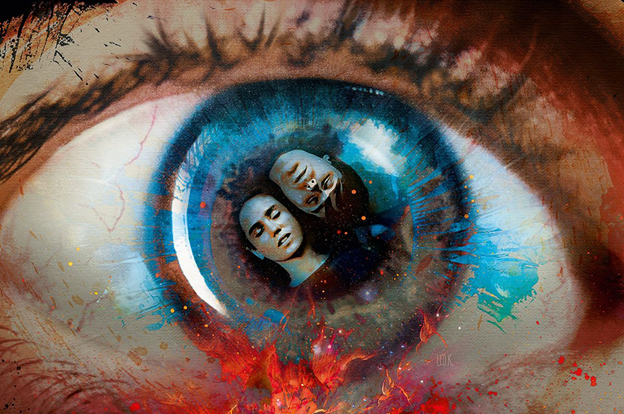
Few pieces of music feel like they’re pulling you under. Performed by the Kronos Quartet, Clint Mansell’s Lux Aeterna doesn’t just accompany Darren Aronofsky’s 2000 film Requiem for a Dream, it drowns it in dread.
In Requiem for a Dream, Lux Aeterna does more than set a mood: it acts like an emotional parasite, feeding off the characters' deteriorating hopes. As the film’s central leitmotif, it embodies its entire narrative: that the dreams of every character on screen will never come to fruition as long as they are enslaved by their addiction. It is quite literally a requiem, a mournful chanting for the dreams that have faded away.
As the story descends deeper into addiction, delusion, and obsession, the score steadily intensifies, looping and layering like a growing obsession itself. Its relentless rhythm reverberates the characters' routines (pills, deals, television) until those compulsions collapse entirely. Aronofsky rarely allows the music to rest: even in calm moments, its presence looms, hinting at a storm. The audience is never allowed to feel safe.
At its core, Lux Aeterna is deceptively simple: a string motif built on four primary chords, oscillating between five-note and two-note melodies. But this simplicity is what makes it devastating. Building in a minor key, the piece evokes a constant sense of unease. There is no melodic release, no warmth, just an ever-tightening spiral that mimics psychological collapse. The Kronos Quartet’s performance feels almost mechanical at times, like a mind stuck in its own loop. With each repetition, the music mirrors the characters’ entrapment. Every return is a reminder that they’re still stuck, and it’s only getting worse.
Few scenes are as emotionally crushing as Requiem’s final montage, when the lives of all four main characters implode in unison. Here, Lux Aeterna reaches its full crescendo, not just in volume but in emotional weight. The music doesn’t simply accompany the visuals; it amplifies them into something almost unbearable. As the camera cuts between electroshock therapy, amputation, and isolation, the score binds everything together in a single unified scream. It doesn’t guide our emotions; it rather forces them upon us. We become just as overwhelmed as the characters.
In many ways, the music reflects the structure of the film itself. After all the buildup, all the frantic energy, and attempted resolutions, it betrays us and ends the same way it began. Just like the characters, and just like a dream, we have gone nowhere, and nothing has changed.
In most films, music lingers in the background, enhancing emotion quietly. But in Requiem for a Dream, Lux Aeterna is so intense, so present, it almost replaces dialogue or emotional expression, functioning as a diegetic element that interacts with the characters and their environment in a way that’s just as noticeable and impactful as the images on screen. The characters are numb, silent, unable to express their despair, but the music does it for them, an echo of pain, fear, and hopelessness.
Lux Aeterna isn’t just a soundtrack; it’s a warning. In Requiem for a Dream, music isn’t in the background; it’s the scream no one hears.